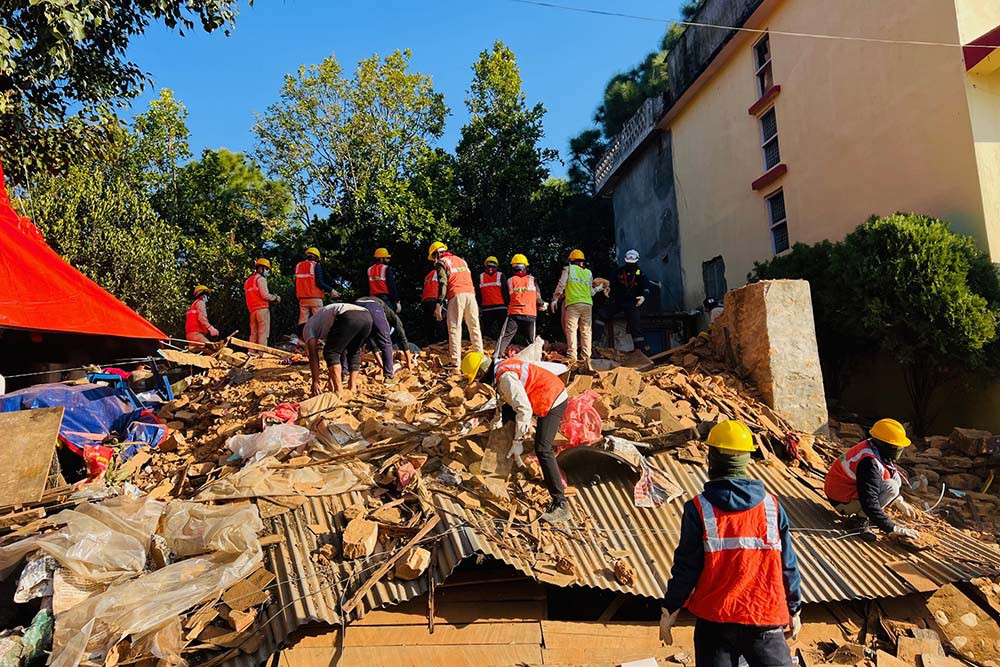
Setting up a digital platform
According to Hom Nath Acharya, the Principal of Budhanilkantha School, with over a thousand students from grade five to high school has been witnessing positive usage of the school’s newly initiated online learning program. Acharya believes that it is the school’s responsibility to do something for the students during this time of crisis, and shares that the school has been using the popular online communication platform Microsoft Teams to conduct all of its classes during the lockdown. “While our faculties were not used to these technologies before, they went through training and orientations in order to conduct the classes”, states Acharya, adding, “The students were excited to try out online classes, however the teachers were somewhat reluctant initially. Now majority of the teachers see this as an opportunity and gradually the school has been able to involve all the members of faculty.”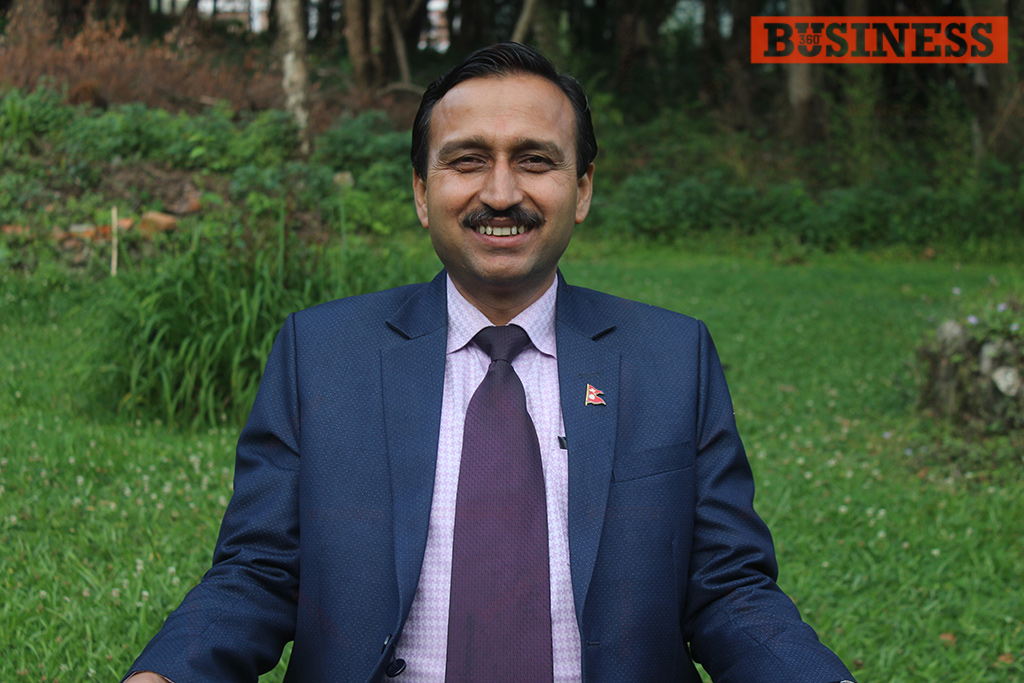
Coordinator of Media Studies at Kathmandu University, Sudarshan Prasad Dahal shares a somewhat similar experience in terms of setting up the university’s online learning platform during the lockdown. Dahal shares that the university already had programs such as its Buddhist Studies course online, yet going digital for the other programs was a monumental step for the institution. “In order to map how the process needs to work we conducted various surveys, consultations, interactions with students and faculty, and even studied the practices of internationally reputed institutions,” says Dahal. He also explains how in order to transform the traditional classroom to a digital one for over 150 different courses, the university started out with their PhD and MPhil programs, gradually working their way down to the undergraduate levels. Dahal notes that while most of the courses have been adapted for a digital approach, some courses are still taking baby steps through applications like Viber or Messenger.“The students were excited to try out online classes; however, the teachers were somewhat reluctant initially. Now majority of the teachers see this as an opportunity and gradually the school has been able to involve all the members of faculty.”
Hom Nath Acharya Principal, Budhanilkantha School
Maximising reach or widening the divide?
While schools and universities rush to take courses online, what about pupils from low-income households or rural areas that don’t enjoy a reliable internet connection or have the proper devices for classes? One of the first subjects of debate to arise was whether or not online education is something that is useful only for private schools and urban areas. This was one the first questions that Acharya had to answer when Budhanilkantha School announced to move its classes online. A nonprofit school by nature, a third of the student population is part of a government subsidised financial scholarship and enrollment is taken from all 77 districts in the country. Parents and students were quick to question how the school planned on delivering classes to students who were economically dependent on the school and didn’t have the resources to access the internet. The solution came to the school in the form of an unlikely ally, Nepal Telecom. Budhanilkantha has managed to achieve through the support of Nepal Telecom to provide those who do not have an internet connection with data packages that will allow students to connect through mobile devices. Acharya shares that the school was able to trace students through their attendance in the early online classes and reach out to those in need. The school was then able to gift students with Nepal Telecom’s
“In order to map how the process needs to work we conducted various surveys, consultations, interactions with students and faculty, and even studied the practices of internationally reputed institutions,”
Sudarshan Prasad Dahal Coordinator of Media Studies at Kathmandu University
E-shikshya data packages.
Operating on NTC’s 2G, 3G, and 4G networks, the E-shikshya package provides 6GB of data at Rs.260 or 15GB data at Rs.500 to students upon request from school administration. Rajesh Joshi, Spokesperson for Nepal Telecom explains, “Designed as part of Nepal Telecom’s corporate social responsibility during the COVID 19 lockdown, this package has specifically been targeted towards Nepal’s students and teachers. To access this package, schools and academic institutions are required to provide NTC with the names and phone numbers of their students via email. Once the telecom feeds this information into their system, a message is sent to those numbers with details on how to activate the package.” Currently, Budhanilkantha School has been able to provide these data packages for their students spread across the country with the help of parent donations. Acharya proudly boasts how the school has a near 100% attendance rate from its students during online classes. While big schools like Budhanilkantha can afford to provide students with such facilities, the same cannot be said for most public schools in the country. Take for instance Tri Padma Vidhyashram Secondary School, a government run school in Pulchowk which has not been able to properly connect with a large percentage of its students ever since the lockdown started. With approximately 1350 students from playgroup all the way to grade 12, the school shares that they have only been able to reach approximately 50% of the student body. When further information of the missing in network students was collected in order to estimate where they were located and whether or not they had access to internet, the school found that half of that group were dispersed outside the valley and only about 20% had a stable internet connection. Under such challenges for government schools like Tri Padma Vidhyashram, it is near impossible to follow conducting classes on Zoom and Google Meet. Despite it all, in an attempt to help their present SEE batch of students, the school initiated revisional video classes however the outcomes has been dismal. Kadam Baba Pradhan, the Principal for Tri Padma Vidhyashram shares, “While we did start online classes, out of the 88 students who are due to appear in SEE, only 27-28 students are in touch with us,” Pradhan goes on to add, “The school also tried to hold science classes for grade 11 and 12 but out of the total 22 students, only 8 or 9 could attend the classes.”
An alternative approach happens to come from DishHome, who has managed to partner up with Deerwalk Learning Center in order to broadcast their Ghar Mai class initiative, that attempts to provide televised lessons for students of grade 4 to 10. Sudeep Acharya, the Managing Director of the DTH service provider shares, “To be frank, I see this as the only way to reach out to the largest number of students. I know that there is a talk about online classes; even my kids who go to school in Kathmandu have online classes but the problem with this is that students need a laptop, a stable internet connection and infrastructure which is rather difficult to get in this moment.”“Designed as part of Nepal Telecom’s corporate social responsibility during the COVID 19 lockdown, this package has specifically been targeted towards Nepal’s students and teachers. To access this package, schools and academic institutions are required to provide NTC with the names and phone numbers of their students via email. Once the telecom feeds this information into their system, a message is sent to those numbers with details on how to activate the package.”
Rajesh Joshi Spokesperson, Nepal Telecom
Are online classes even effective?
When asked about how effective their online sessions have been for students from various grades, Acharya shares, “For grades 9 and 10 the classes have been really effective; and for A-level students it has been extra effective.” But he notes that the lower grades still seem to lack maturity and require more input from parents. Even at a university level, while the classes might have been going about without any major hinderances, Dahal shares that the learning and teaching experience itself isn’t always frictionless. “There always exists inertia for new movement. Things such as turning textbooks and reference materials online, library limitations are very challenging,” he explains.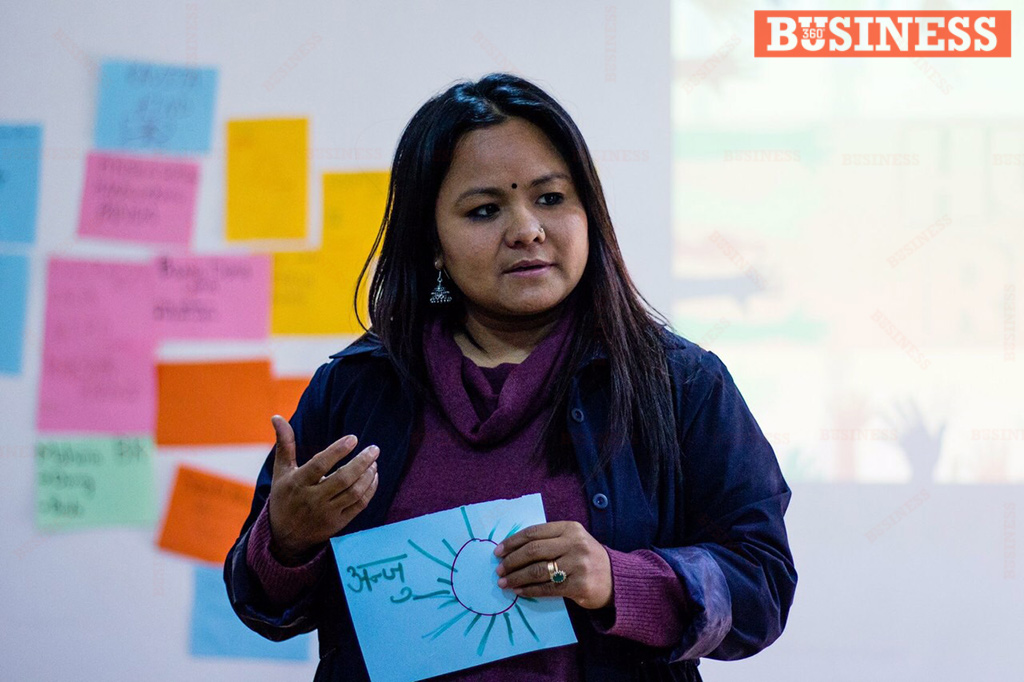
He also emphasises the stress and psychological strain that might fall on students and faculties during such troubling times. However, Dahal on a brighter comment points out that the university realised that traditional teaching styles would not be the best course of action for online classes and has hence adapted new practices. “In contrast to real classrooms, online classes need to be shorter. Moreover, to retain focus, classes need to be taught in a demonstrative way,” suggests Dahal, who himself has had to teach online. While administrative bodies of schools and universities have finally begun to pick up pace, students and parents seem to carry mixed feelings. Anurag Dahal, an undergraduate student at Islington College voices, “In physical classes, students have to make the effort to get prepared on time, be punctual, travel from their residence to the college. This subconsciously forces them to be attentive during the class. Else all the effort would be for nothing. However, online classes involve no effort. There are thousands of impulses competing for our attention. A single click can open something that guarantees more pleasure than listening to a dull lecturer.”“I would like to see more engaging group assignments, discussions with lesser screen time and more of learning collectively from our current situation.”
Anju Pun A Parent
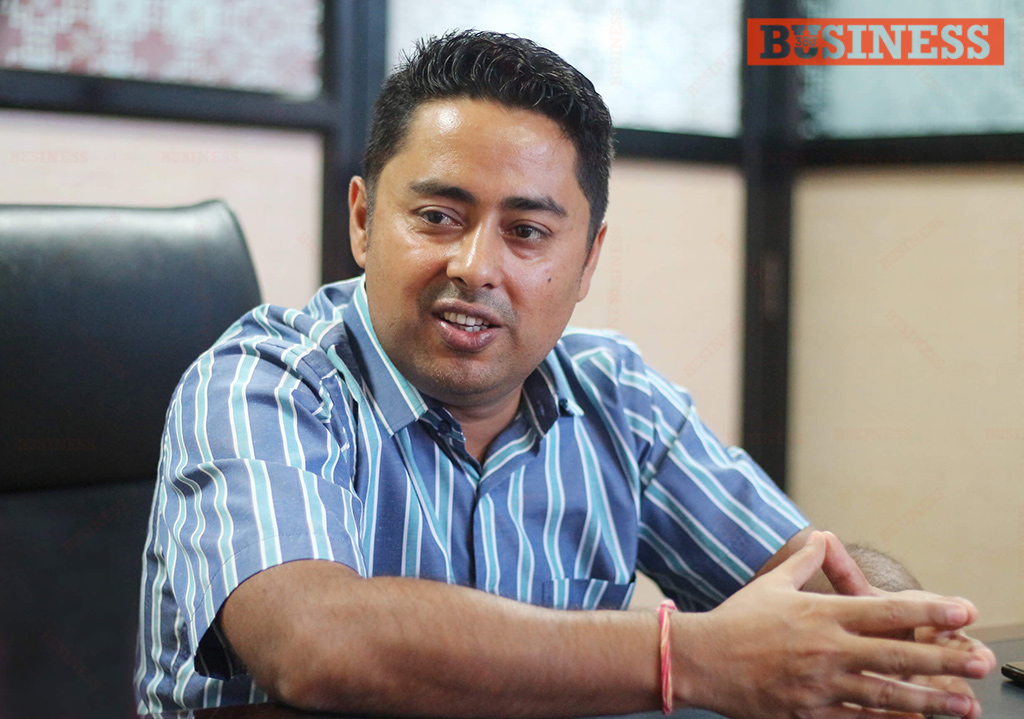
Mother of a fifth grader at Nisarga Batika School, Anju Pun also carries her own set of opinions on online classes. Pun, in relation to how her child has adapted to these classes, says, “I found her confident, calm and a good listener in her online classes but sometimes she gets irritated when everyone speaks at one time and it becomes inaudible. My husband and I sat next to her in the first two sessions but after that we let her experience this phase of her e-learning and she is fine with it.” How would she like to see online classes being conducted? Pun suggests, “I would like to see more engaging group assignments, discussions with lesser screen time and more of learning collectively from our current situation, and to foster understanding and appreciating what we have.”“There always exists inertia for new movement. Things such as turning textbooks and reference materials online and library limitations are very challenging,”
Sudeep Acharya Managing Director DTH Service

“In contrast to real classrooms, online classes need to be shorter. Moreover, to retain focus, classes need to be taught in a demonstrative way,”
Anurag Dahal Undergraduate student Islington College
The post-COVID academic year
While the answer to how the situation will be after the crisis is something that only time will tell. The lockdown has become a financial burden for everyone but it has hit some far worse than it has for others. Educational institutions like Budhanilkantha and Kathmandu University have had talks regarding reducing fees on the basis of the miscellaneous cost that these institutes have saved while still charging the tuition fee. In other schools, parents and guardians raise concerns whether schools are only running online classes as a gimmick to keep charging the fee. Schools like Tri Padma Vidhyashram that run on government grants on the basis of student numbers are faced with the issue of providing for current faculties and staff should the number of students drop after the COVID 19 crisis.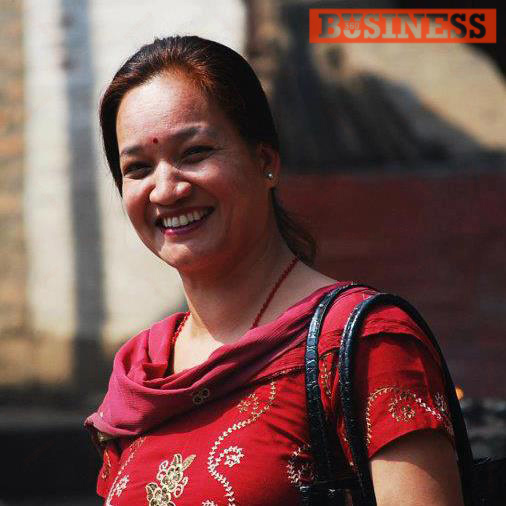
While institutes believe that they can still adhere to the current academic calendar, what might happen if the pandemic worsens still poses a big question mark. With major examination boards like the SEE and the HSEB brought to a halt, some suggest that this might affect enrollment rates as well as the time of year in which the next academic year is due to begin. While distance learning classes have come to be seen as a possible relief for the education system in Nepal, it could also be easily debated if distance learning measures are little more than band-aid trying to cover up a serious injury.“While we did start online classes, out of the 88 students who are due to appear in SEE, only 27-28 students are in touch with us,”
Kadam Baba Pradhan Principal Tri Padma Vidhyashram




